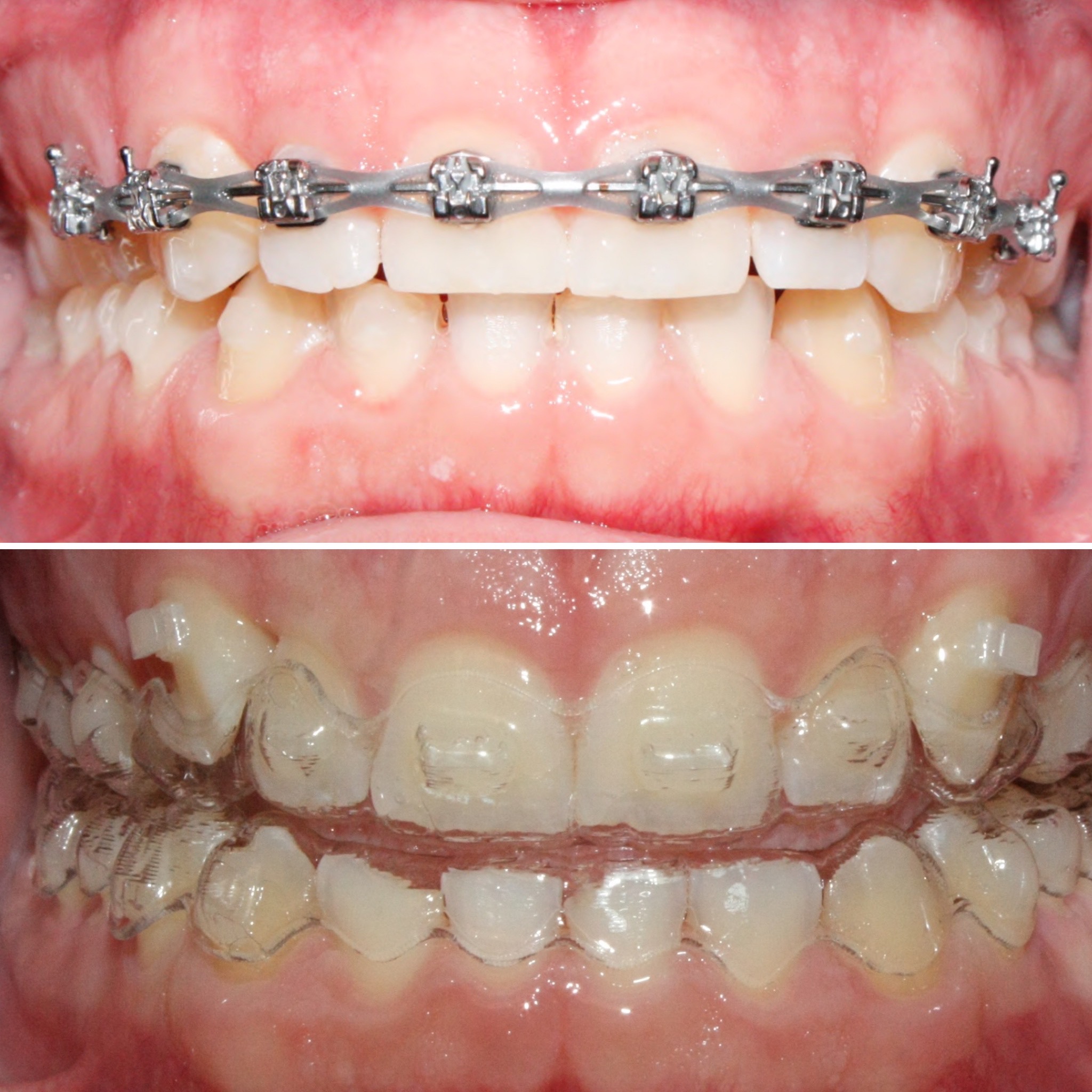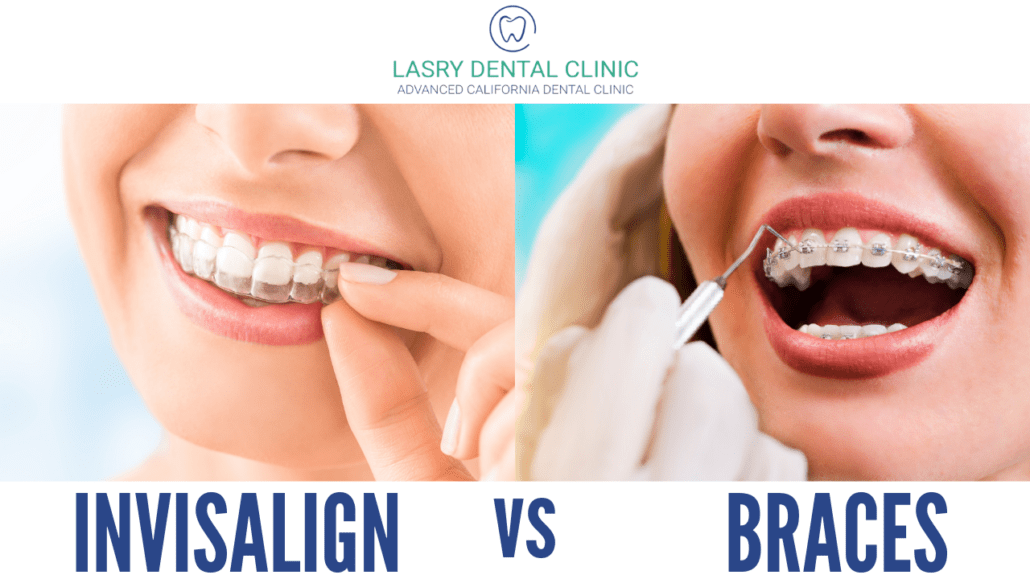The Expense of Invisalign: Comprehending the Investment in Your Smile
The Expense of Invisalign: Comprehending the Investment in Your Smile
Blog Article
Invisalign vs. Conventional Braces: Which Choice Is Right for You?
When taking into consideration orthodontic therapy, the choice between Invisalign and typical braces presents numerous important aspects that warrant mindful evaluation. Invisalign offers a very discreet choice with removable aligners, while conventional dental braces supply a much more noticeable yet reliable service for extreme misalignment.
Introduction of Therapy Choices

On the other hand, typical braces contain steel braces and cables that are bound to the teeth. This technique applies continual pressure gradually to achieve alignment. While reliable for intricate orthodontic issues, standard dental braces require routine gos to for modifications and can posture challenges in preserving oral hygiene as a result of the difficulty of cleaning up around brackets and cords.
Both alternatives have their values, and the option frequently rests on certain oral conditions, way of living choices, and patient compliance. Eventually, consulting an orthodontic expert is crucial for determining the most ideal treatment plan tailored to private needs. Recognizing the subtleties of each choice can significantly affect the general success of orthodontic treatment.
Aesthetic Factors To Consider
A significant aspect influencing the choice in between Invisalign and standard dental braces is the visual appeal each therapy provides. Invisalign aligners are crafted from clear plastic, making them practically unseen when used. This very discreet appearance is especially attracting teenagers and grownups who may feel awkward concerning their orthodontic therapy. The capacity to preserve a natural smile throughout the alignment process can substantially improve the individual's self-confidence in social and specialist setups.
In contrast, conventional dental braces include metal braces and wires, which can be extra noticeable. While innovations in orthodontic innovation have actually led to the advancement of smaller brackets and colored elastics, standard braces still keep a more noticeable profile. For some people, the visibility of dental braces might hinder them from seeking essential therapy.
Inevitably, the selection in between Invisalign and standard braces may rest on individual preferences pertaining to looks. Patients who prioritize discretion often lean towards Invisalign, while those that are less concerned regarding visibility may choose standard dental braces. Comprehending the visual implications of each choice is important for making an informed choice that aligns with one's way of life and choices.
Comfort and Convenience

In regards to comfort, Invisalign aligners are removable, enabling clients to enjoy their favorite foods without constraint and maintain ideal dental hygiene. Brushing and flossing are simplified, as the aligners can be gotten throughout these routines, whereas traditional braces need careful navigating around wires and braces.
In contrast, conventional braces demand normal modifications, making them much less practical for those with hectic routines. Overall, the comfort and benefit of Invisalign make it an appealing choice for numerous people seeking orthodontic treatment.
Treatment Period and Efficiency
While both Invisalign and traditional braces are effective in dealing with dental misalignments, the period of therapy can differ significantly in between the 2 options. Generally, Invisalign therapy can take anywhere from 12 to 18 months, depending upon the complexity of the instance. The clear aligners work by progressively shifting teeth right into their preferred positions, and normal follow-ups with an orthodontist aid guarantee progress stays on course.
In comparison, standard braces usually need a longer commitment, usually varying from 18 months to 3 years. This is due to their set nature and the use of braces and cords, which can be a lot more reliable for serious imbalances and complicated cases (Invisalign). The treatment effectiveness of traditional dental braces is well-documented, as they permit for precise adjustments and higher control over tooth motion
Inevitably, the option in between Invisalign and standard braces might hinge on both the awaited treatment duration and the certain oral concerns handy. Consulting with an orthodontist is vital, as they can give tailored referrals based upon specific requirements, making certain the picked method aligns with wanted results and timeframes.
Cost Contrast and Insurance Options
Cost plays a considerable role in the decision-making procedure click to find out more for individuals considering orthodontic therapy, whether choosing for Invisalign or typical dental braces. On standard, the expense of Invisalign ranges from $3,000 to $8,000, while traditional braces commonly cost in between $2,000 and $6,000. Aspects influencing these costs consist of the complexity of the situation, the duration their explanation of treatment, and geographical location.
Numerous dental insurance coverage plans offer partial insurance coverage for orthodontic treatments, but the specifics can vary extensively. Typically, standard dental braces might be a lot more frequently covered by insurance policy plans contrasted to Invisalign, which some insurers classify as an aesthetic treatment.
Additionally, several orthodontic practices provide adaptable repayment plans, making both treatment choices a lot more available. Individuals should ask about prospective financing options and discounts for upfront settlements. Evaluating the overall expense, consisting of insurance coverage benefits and payment plans, is vital for making a notified choice that lines up with both aesthetic choices and spending plan factors to consider.

Verdict
In summary, the option between Invisalign and typical braces pivots on multiple elements, including aesthetic choices, comfort, treatment duration, and expense. Invisalign supplies a very discreet, removable option that facilitates oral hygiene and nutritional adaptability, Related Site while conventional braces may be a lot more ideal for complex oral problems and commonly come at a reduced cost factor. Inevitably, appointment with an orthodontist is vital to assess individual circumstances and determine one of the most ideal treatment option for accomplishing ideal dental alignment.
When considering orthodontic therapy, the selection between Invisalign and standard braces offers several crucial variables that merit mindful analysis.Comparing Invisalign and standard dental braces discloses unique therapy choices for orthodontic modification.While both Invisalign and traditional dental braces are effective in remedying dental misalignments, the period of treatment can vary substantially in between the 2 options.Expense plays a significant duty in the decision-making process for people taking into consideration orthodontic treatment, whether choosing for Invisalign or standard dental braces.In recap, the selection in between Invisalign and standard braces pivots on several aspects, including visual choices, convenience, treatment period, and cost.
Report this page